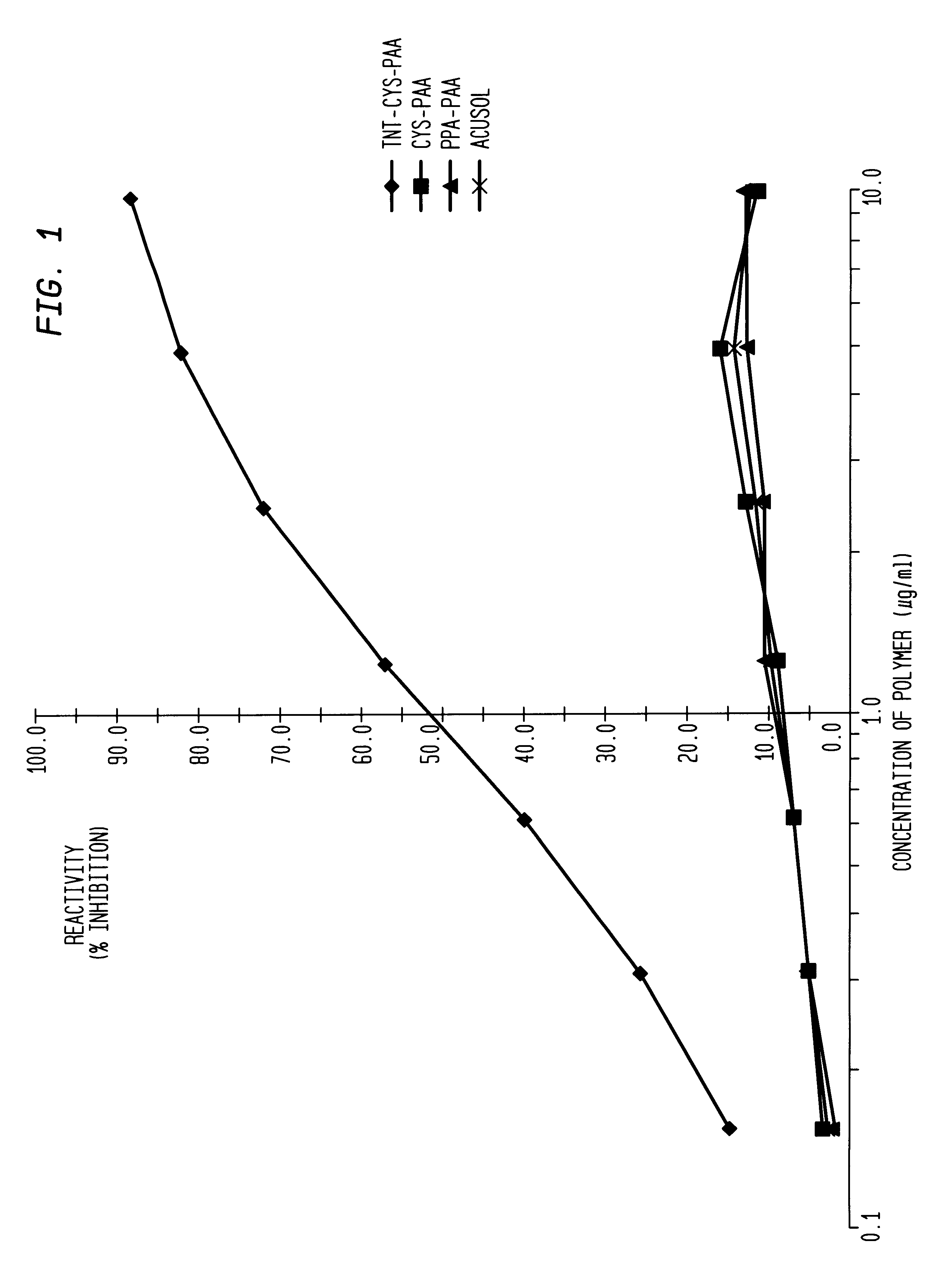Method for identifying and quantifying polymers utilizing immunoassay techniques
a polymer and immunoassay technology, applied in the field of methods, can solve the problems of high active polymer concentration, inconvenient use, and inability to detect polymers using traditional detection methods such as calorimetric or fluorimetric assays, and achieve the effect of reducing the number of polymers
- Summary
- Abstract
- Description
- Claims
- Application Information
AI Technical Summary
Problems solved by technology
Method used
Image
Examples
example 2
Preparation of MAbs
For each group of five mice, one of the immunoconjugates of Example 1B was injected over a three month period, in accordance with the following immunization protocol.
At approximately two months after birth, five Swiss mice were bled (tail vein bleeding), the blood pooled, and serum assayed. About two weeks later, a mixture of 0.1 mL of antigen (immunoconjugate) emulsified in 0.1 mL of CFA in saline was injected into the peritoneal cavity of each mouse. At subsequent two week intervals, for about three months, mixtures of 0.1 mL of antigen in saline were emulsified in 0.1 mL of IFA, and injected intraperitoneally into the mice. Blood samples were taken at one-month intervals, and at the conclusion of the immunization period, in order to monitor antibody levels.
Upon conclusion of the immunization period, the sensitized lymphocytes were harvested from the spleen and fused with myeloma cells to form the hybridoma cells. Any of a large number of myeloma cell lines are ...
example 3
Testing MAb Specificity
A competition assay was performed using polymers tagged with various endgroups.
TNT-CYS-polymer (the Tagged polymer) was prepared by reacting the amino terminus of a cysteine-modified polymer with 2,4,6-trinitrobenzenesulfonic acid. Unreacted 2,4,6-trinitrobenzenesulfonic acid was removed by diafiltration using an Amicron.RTM. microconcentrator. Such cysteine-modified polymers (wherein cysteine is used as the chain transfer agent) are described in McCallum, et al., referenced earlier.
Immulolon-2 plates were coated with 100 .mu.L / well of purified anti-TNT MAb at 5 .mu.g / mL in 0.1M carbonate buffer (pH 9.6), and the plates incubated overnight at 4.degree. C., or for 1 hour at 37.degree. C. After incubation, the plates were washed three times with PT, rotated 180.degree., and washed another three times with PT. At this point, 125 .mu.L / well of PCT was added, and the plates incubated for 1 hour at room temperature on a plate shaker set at 120 rpm. After incubation,...
PUM
 Login to View More
Login to View More Abstract
Description
Claims
Application Information
 Login to View More
Login to View More - R&D
- Intellectual Property
- Life Sciences
- Materials
- Tech Scout
- Unparalleled Data Quality
- Higher Quality Content
- 60% Fewer Hallucinations
Browse by: Latest US Patents, China's latest patents, Technical Efficacy Thesaurus, Application Domain, Technology Topic, Popular Technical Reports.
© 2025 PatSnap. All rights reserved.Legal|Privacy policy|Modern Slavery Act Transparency Statement|Sitemap|About US| Contact US: help@patsnap.com

